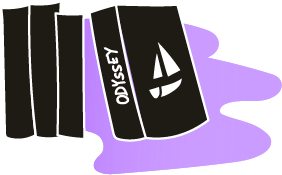Title of the resource
Title of the resource in english
Publisher
Wydawnictwo Edgard
Original language
Target and Age Group
Self-learners, high school, university students
Author of the Entry:
Marta Pszczolińska, University of Warsaw, m.pszczolinska@al.uw.edu.pl
Peer-reviewer of the Entry:
Elżbieta Olechowska, University of Warsaw, elzbieta.olechowska@gmail.com
Second Peer-reviewer of the Entry:
Ayelet Peer, Bar- Ilan University, ayelet.peer@biu.ac.il
Inga Grześczak
Inga Grześczak is a classical philologist, Latinist and a senior lecturer at the Workshop of Renaissance Studies at the Institute of Classical Studies, University of Warsaw. She teaches Latin to students of Classical Philology and teaches language courses at other faculties of the University as well as optional courses on text editing and Polish descriptive grammar.
She is the author of a selection of essays on Antiquity, books such as Ścieżki śródziemnomorskie (Mediterranean Paths), Alfabet antyczny (The Ancient Alphabet), an intermediate level Latin textbook and many translations (i.a. On Famous Women/De mulieribus claris by Giovanni Boccaccio, The Facetiae by Poggio Bracciolini and Collective Works of Giovanni Battista Cocciola). She has edited numerous texts on Antiquity and its reception and co-organized conferences and didactic workshops Nowoczesna dydaktyka akademicka języków klasycznych (Modern academic didactics of the classical languages).
Contents & Purpose
The textbook was mainly designed for self-study. The Latin subheading Fons et origo [source and origin] is supposed to express the idea that the composition and contents of the book aim at showcasing the rich cultural heritage of Antiquity as reflected in the Latin language.
The body of the book has been divided into 7 lessons (lectiones), each concerning a different area of life - from everyday activities, through beliefs and fine arts, to sciences. Each of the lessons has 3 chapters (capitula), each regarding more specific concepts (e.g. lesson Everyday life features chapters about meals and food, clothing and hairstyles as well as leisure/entertainment). Each chapter opens with a thematically related Latin maxim followed by a text with a glossary (with an additional glossary at the end of the book), 10 more maxims regarding the topic of the lesson, an explanation of grammatical terms, a set of lexical and grammatical exercises and a revision of previous lessons. The chapters also feature linguistic and cultural curiosities in designated blue boxes. Each chapter is closed with a short "text for dessert" mensa secunda - a short rhyme, an inscription or note.
The texts at the beginning of the book are partly adapted to the level of the learner, even though they are still sourced from ancient authors. They become progressively more difficult and towards the end of the book, there are only unmodified texts. Each exercise and text is accompanied by an answer key so that the learner can verify the correctness of responses (with the translations of the text being as accurate as possible - yet still linguistically correct - so that one can see its exact relation to the text).
References to mythology appear from the first chapter of lesson 2, in which a Latin text about the beliefs of Greeks and Romans introduces the main deities and Hyginus’ myths of Midas and his donkey ears and the Golden Touch. There is also a mention of the Trojan War and the story of the Trojan horse according to Hyginus. The maxims and cultural boxes in the chapters also refer to mythology. The chapter about arts mentions the Muses as the daughters of Jupiter and Memory (Memoria) and the chapter about the Roman state introduces the mythical Trojan refugees under the leadership of Aeneas. The chapter Incredibile dictu again features Midas, king of Phrygia, and the ants which foretold him the legendary wealth. Also, the chapter about astronomy evokes mythology through the names of stars under the patronage of Helen of Troy, Castor and Pollux, and its mensa secunda presents the beginning of carmen I,3 by Horace with the appeal to Venus, Castor and Pollux so that they safely guide Virgil’s ship.


